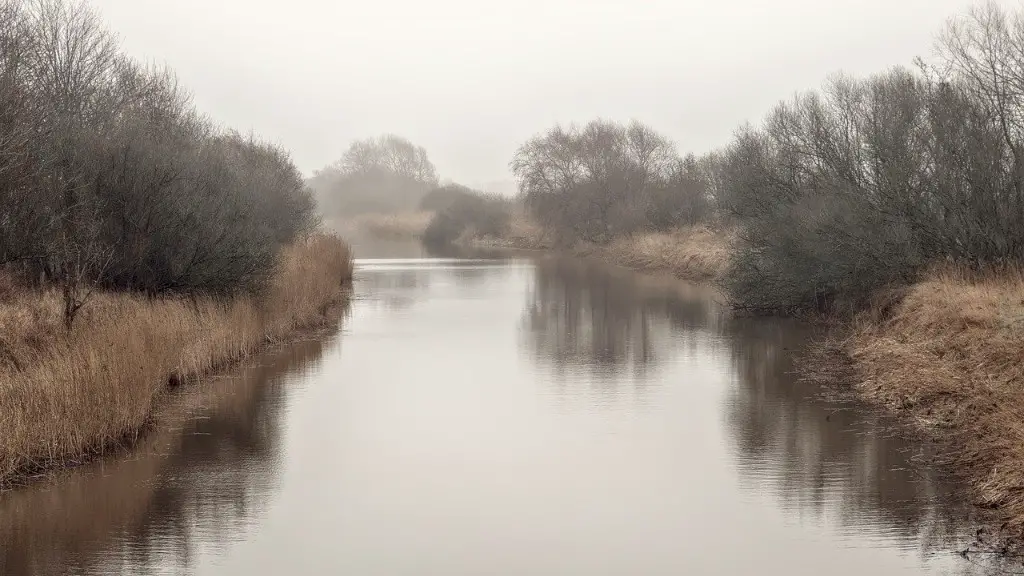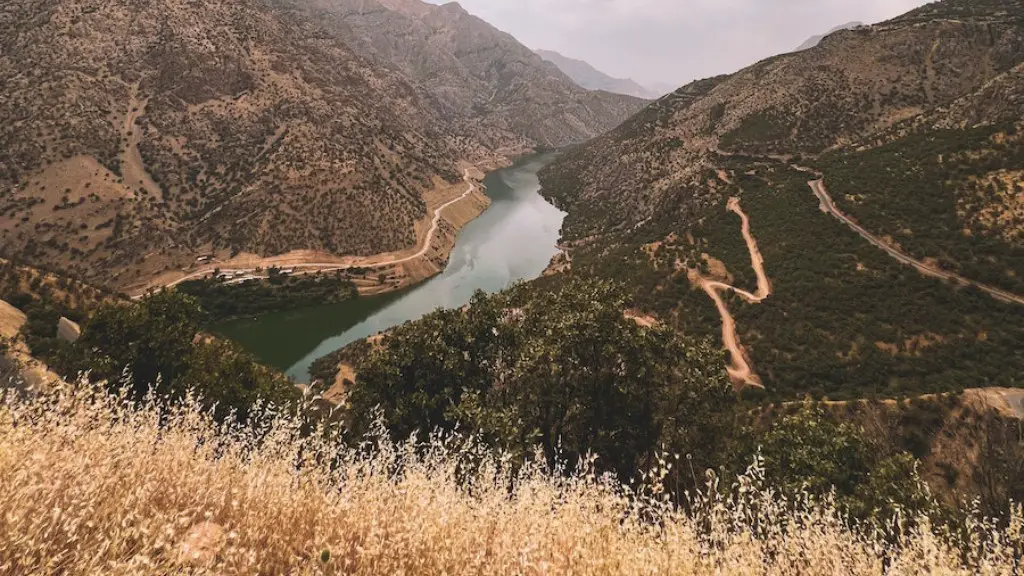The Yangtze River – the longest and third-largest river on the planet – is, unfortunately, looking much browner than it used to. Spanning 6,300 kilometers (3,915 miles) and connecting 11 provinces and municipalities, this vital river acts as a major source of drinking water and irrigation for China’s hundreds of millions of people. It’s an integral piece of the country’s history, but its regional environment has recently changed drastically. With a newfound yellowish-brown discoloration, the questions of why and how this is happening have become hard to ignore.
For experts in the field of geology, the answer lies in two points: natural sediment and human activity. As for the natural sediment, the pure white sand that normally makes up the bottom of the Yangtze is quickly being flattened by the force of its current, revealing a much uglier, yellowish-brown sediment. The cause of this is climate change, specifically a higher rate of deposition and water temperature.
As for human activity, sediment and mud dumping by large scale industries are the main culprits. Due to industrialization, pollution of all sorts (including sewage, fertilizer, and agrochemical runoff) that gets dumped into the river is making the situation much worse. This combination of run-off and natural sediment has been in effect long enough to create a visible difference.
The environmental damage caused by what is essentially paint pollution is concerning to experts, and the effects can already be seen. Due to the thickened sediment, the amount of sunlight that reaches the riverbed has decreased. As a result, the number of organisms that can live in the river has reduced drastically.
Additionally, some pollutants that dissolve in the water make it more acidic. When contributed to the muddy bottom, this acidity can cause huge concentrations of lead and arsenic which can harm humans, animals and plants. Species that spend their entire lives near the river, such as turtles, caimans and a rare species of river-dolphin called the Yangtze Finless Porpoise, are also put in serious danger.
These changes are worrying to some of China’s citizens who have seen the effects of pollution on other parts of the world. Though China has been improving its environmental regulations, what is already in the river may take a long time to disappear. This is due to the lack of understanding and awareness on the part of citizens and businesses that consistently release pollutants and calcium-rich substances into the river.
Many organizations are attempting to fight the pollution, with campaigns such as the “Take Care of the Yangtze” movement. This involves expanding cleaning programs, increasing public awareness and creating a monitoring system for pollutants. With a strong will, public attention and more scientists and researchers, perhaps the Yangtze can be brought back to its original beauty.
Risk To Wild Life
The rapid discoloration of the Yangtze is not only an environmental hazard that affects the aesthetics, but a clear risk to aquatic life in the river. According to a National Geographic article, the thick sediment at the bottom prevents the sunlight from penetrating, reducing algae growth and the amount of oxygen available for species. In addition, the polluting debris in the river, when combined with the natural churn, creates a greater acidity in the water.
The most visible effect of this is the risk of extinction posed to the Yangtze Finless Porpoise. As of January 2019, the population of this endangered species was estimated to be just under one thousand, and a significant fraction of the decrease in numbers is believed to be connected to the pollution in the river.
The Chinese Alligator is another species at risk, as a 2016 report showed that the population had fallen exceedingly since the 1950s. The most probable cause for this sudden population decrease has been identified as the burying of their habitats due to the sediment-rich water, and it is widely believed that the species is overpopulated near certain sections of the river.
Other species such as the Asian Freshwater Turtle, the Chinese Paddlefish and the Sheatfish are currently critically endangered, and many experts think the direct correlation between their current situation and the lack of river cleanliness is undeniable.
Government Actions
In the most recent years, the Chinese government has increased its efforts in curbing pollution and managing the effects on the environment. Stricter laws to manage industrial emissions and pollution as well as campaigns to raise awareness of the situation has helped reduce the amount of pollutants being sent to the river.
The government has also taken steps to clean the Yangtze, such as a 2014 initiative to clean up the river stretch between Nanjing and Jiujiang. The project, funded by the Chinese government, saw the use of professional ship dredgers to reduce the risk from floods and allow boats to move more freely down the river.
Local governments have also been seen introducing additional measures to protect their local water supplies. Closer monitoring of pollutants stemming from businesses, stricter regulations on waste disposal or upgrades to sewage systems are just some of the activities that have been taken in areas surrounding the Yangtze.
Overall, the government has made a positive step forward in managing the pollution, and with aggressive education and collaboration between environmentally-aware citizens, things are beginning to look positive for the future of the river.
Existing Solutions
Currently, the solutions being proposed are methods to reduce the current pollution rate of the Yangtze. The Chinese Environmental Protection Agency has taken a step towards this by issuing The Pollution Source Origin Regionalism Control in 2018. This is an ambitious plan that seeks to reduce the amount of pollutants coming from factories and farms along the river.
Organizations such as the China Water Risk Initiative, a public advocacy NGO dedicated to eliminating water pollution, have also contributed to the fight. By carefully managing their campaigns and partnerships with other organizations, they raise awareness of the effects of pollution and the damages it can cause.
Finally, the Chinese government has recently proposed solutions such as the “Beautiful China” initiative. This plan would involve reclaiming polluted land, as well as restoring ecosystems, forests, and wetlands by preventing soil erosion, improving air quality, and restoring habitats.
Environmental Education
It can be argued that one of the main solutions to the environmental devastation of the Yangtze River lies in the ability of the citizens to understand their environment and the global importance of sustainability. Environmental education – or lack thereof, has been identified as the direct correlative to the lack of awareness on the importance of preserving our planet’s health.
A basic awareness about our environment, and the problems associated to it can be essential for shifting citizens’s behaviour. Therefore, introducing concepts such as waste management, climate change and ecosystems in our academic system from a young age is key for creating a more sustainable society.
In addition, enacting local campaigns and incentives to both companies and individuals on the importance of sustainability and the damage caused to our rivers by pollutants can be an essential factor for creating a more responsible and aware population. By using the power of social media and technology, we can reach people across the globe and convey this message.
International Support
It is clear that the Yangtze River’s devastation is a shared responsibility and thus, global collaboration is necessary to be able to create and maintain a healthy environment. Several international organizations have already expressed their support and interest in preserving the Yangtze, such as UNESCO and the World Wide Fund for Nature (WWF).
The UNESCO World Heritage site within the Yangtze, for example, is being put under threat due to the increasing levels of sedimentation and pollution. In 2016, when this situation became critical, the organization showed their concern and responsed by creating a new project to monitor and analyse the pollution levels in the river.
Additionally, the WWF has taken steps to create better environmental-friendly practices in the Yangtze, such as the Yangtze Wetland Conservation and Fisheries Improvement Program. This initiative aims to provide local communities, fishermen and farmers with the proper guidance and training to sustainably improve the quality of their own ecosystems.
On the whole, international organizations have recognized the importance of saving the Yangtze River and have responded quickly to the declaration of its grim situation.
New Technologies
It is estimated that a large portion of the pollutants entering the Yangtze River lie untouched and often undetected beneath the riverbed, due to the extreme depths and sheer size. In order to tackle this issue, new technologies and methods of monitoring must be developed.
Artificial intelligence, for example, has been used in recent years to attempt to map the entire river from both aerial and submarine views. By using a combination of satellite images, drones and on-ground sampling, AI has managed to create maps of the river on the microscopic level and allow scientists to analyse these images along with the amount of pollutants they contain.
A better understanding of the pollutants and their concentrations can allow experts to identify the exact location of each pollutant and thus, create more effective solutions.
In addition, by using autonomous robot submarines, scientists can also perform biopsies and water samples at greater depths than ever before and compare them to data taken from years ago. This real-time data gathering can allow accurate tracking and analysis of the pollutants in the river.
To conclude, the combination of new technologies and international support can help in the fight of pollution in the Yangtze River.





